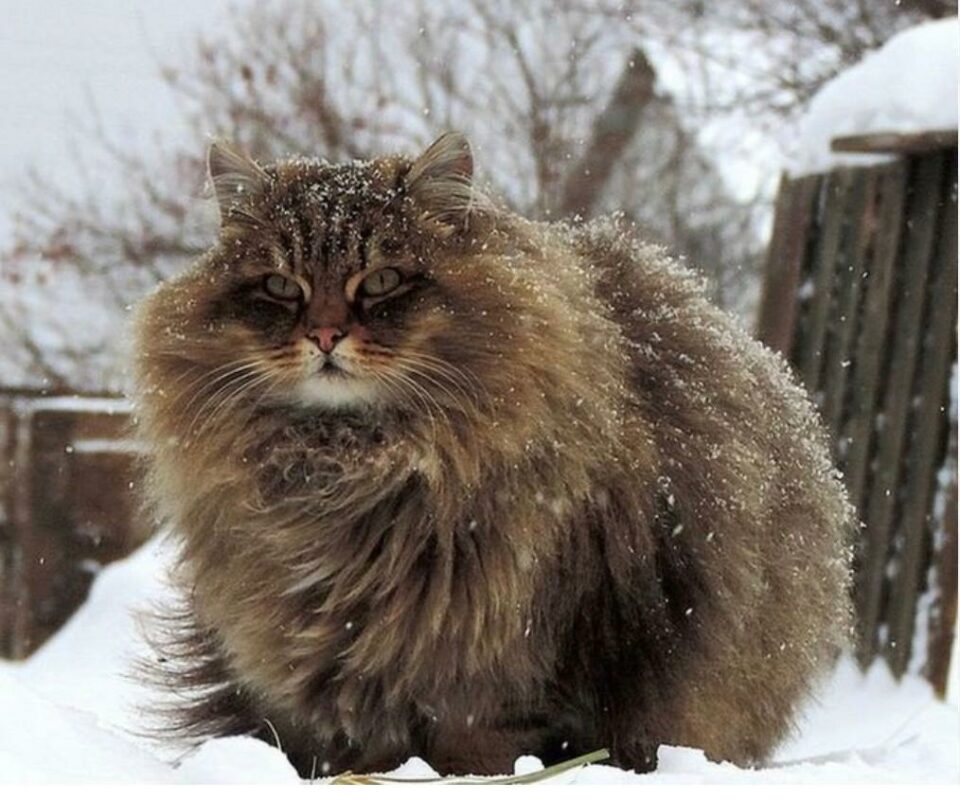As specialised zoologists and felinologists as well as researchers of the history of the Siberian breed assume, the exact description and the name “Siberian cat” appeared at the beginning of the 16th century.

Siberian cats owe their direct origin to their Central Asian ancestors, the so-called “Bukhara cats”, which lived on the territory of present-day Uzbekistan in the 15th century and were distinguished by their size and excellent hunting quality.
Thanks to the development of trade relations (the traders’ caravan route, Silk Road), Bukhara cats spread throughout Siberia over time. It is believed that the origin of today’s ‘Siberians’, are matings of Bukhara cats with native Siberian forest cats, as wild specimens lived in the harsh Siberian taiga. It was these natural conditions that contributed to the formation of dense, long and beautiful hair in these cats. Thus, Siberian cats belong to the forest cat genotype according to their origin, although they share a common Central Asian ancestor. As a result, the ‘Siberian’ was included in many Russian folk tales as a prototype cat.
For many centuries, the Siberian cat remained the favourite pet of many Russian inhabitants. However, official recognition of the breed did not take place until the end of the 20th century. It was not until 1987 that the Siberian cat breed was officially registered in the USSR. Two years later, the breed was firmly included in the list of new breeds of the Felinological Federation of the USSR.

The fenologist Olga Mironova (St. Petersburg, Russia) was instrumental in the creation of a breed standard for Siberian cats. In 1991 this standard was accepted by the World Cat Federation (WCF). Three years later, the organisation recognised the standard as official.
In 1996 the breed was recognised by the American organisation TICA and one year later by another renowned feline association – FIFé. Thus the Siberian breed, called ‘Siberian’ for short, gained worldwide fame.
Since 1992, the Siberian cat has been actively participating in shows at various levels and the breed standard is being finalised. Mono shows are held. The Siberian cat becomes known and popular among a large number of breeders all over the world.

The Neva Masquerade or Neva Masquarade breed was created by Russian breeders by selecting Siberian cats and colour point cats (Persians). This resulting cat got its name because of its occurrence in Leningrad (St. Petersburg, the city through which the river Neva flows) and its facial markings, which resemble a mask, and its paws, similar to gloves.
The spread of the Neva Masquarade cats across countries and continents was accompanied by the adoption of their standard in felinological organisations:
- together with the Siberian cat, it was recognised:
1999 – in the ‘Cat Fanciers Association’ (CFA)
2002 – in the ‘Governing Council of the Cat Fancy’ (GCCF); - as an independent colour within the Siberian breed:
1997 – in ‘The International Cat Association’ (TICA), with admission to shows in 2002,
2002 – in the ‘WORLD CAT FEDERATION’ WCF; - as an independent breed:
2010 – in the Russian Org. ‘International Alliance of Felinologists’ (Alliance SuperCats, ASC).
2011 – in the FIFé, Fédération international Féline

